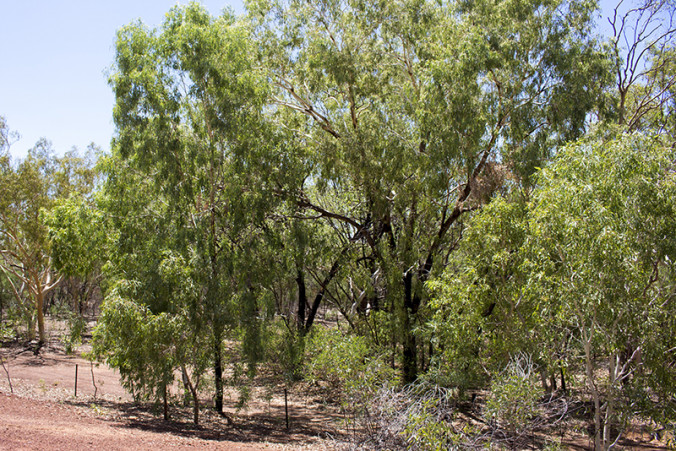What is a blue quandong (Elaeocarpus angustifolius) tree? Also called the blue marble tree or blue fig, though it is not a type of fig. Quandong is a corruption of guwandbang, a word of the Wiradjuri aboriginal people of Australia, is a tall, elaboratively buttressed, fast growing evergreen tree. It grows from South East Asia to the south of Queensland and northern New South Wales, preferring rainforests and the banks of streams. Quandong trees can also be found in New Caledonia, the Northern Territory and New Guinea.
Tolerant of both drought and salinity, quandong trees have drooping, leathery, light grey-green foliage. Leaves are serrated and elliptical in shape, grow mainly at the extremities of the open crown and turn red as they age, occasionally bestowing the quandong with a whole branch of scarlet leaves. One of Australia’s fastest growing rainforest species, quandong trees can reach heights of up to 30 metres or more, with a crown spread of up to eight metres.
As a rainforest plant, quandong trees grow well in full sun and part shade, preferring rich soils that retain moisture, but drain easily. It tolerates light frost and some drought, but does best if sheltered in winter and watered well in summer. Quandong trees are grown for the ornamental flowers, foliage, and their edible, but tangy, bitter fruits.
Blue Quandong fruits are typically spherical, between two and three cm in diameter, with skin a shiny brilliant blue and slightly wrinkled on the surface. Fruit can be harvested directly off branches or collected from around the base of the tree.
Blue Quandong fruit is spherical, between two and three cm in diameter, with skin a shiny brilliant blue and slightly wrinkled on the surface.
The flesh of the fruit is thin and pale green, surrounding a bumpy-textured hard rough woody ‘stone’ that has deep convolutions in its surface and contains up to five seeds. The fruit is attractive to birds and mammals, and is eaten whole by bush turkeys, cassowaries, woopoo pigeons and spectacled flying foxes. The seeds are passed undamaged, and dispersed after digestion of the fruit.
These seeds go by the name of “rudrashka” in India and Nepal, where they are used in prayer beads and jewellery. Despite the fruits having a tangy, bitter flavour and meagre flesh, they were a popular bushfood in aboriginal cooking.
European settlers were also known to use them in jams and pies. Woolworths list Australian Desert Quandong Jam in their online catalogue, but I haven’t seen it in their supermarkets – and I have been looking!
Blue Quandong fruit also used to make jam.
